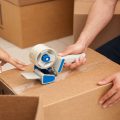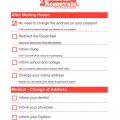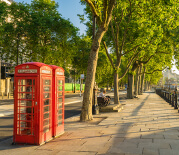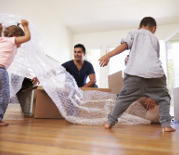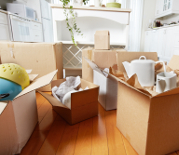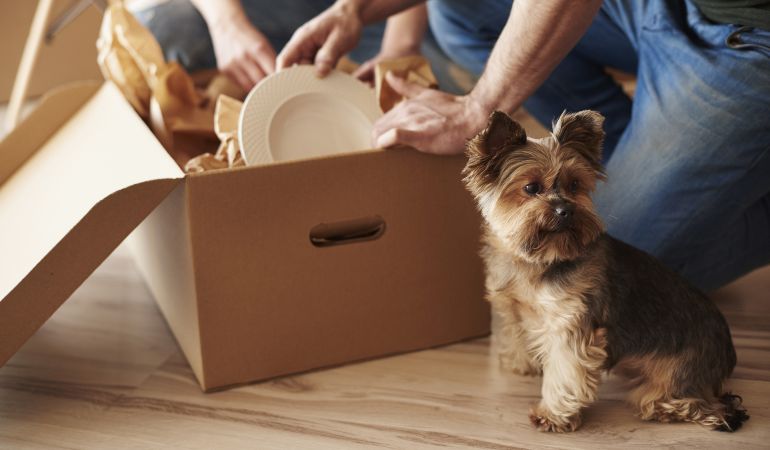
Moving can be tough on humans but imagine how tough it can be for dogs. Dogs love their homes and can feel anxious during relocation to new places. Perhaps the transition is not as tough as moving with cats.
However, if you’re planning to move with your dog, it’s important to consider some measures to make the process easier for them. Start by familiarizing yourself with the UK government’s regulations for entering or returning to the United Kingdom with your pet. Then, check out the tips below on how to help your dog adjust to the new home.
Table of Contents
How do I prepare my dog for moving?
- Don’t neglect your dog’s needs
Removal is a stressful experience and there is probably a lot going on now, but your dog needs you. Don’t shorten the walks, because exercise keeps the dog’s energy down. This means that your dog will be more likely to sleep, instead of engaging in messy, destructive behaviours. Also, it is believed that dogs are more likely to cooperate after nice, energetic walks. - Check vaccination dates and documentation before the move
A lot of pet-friendly places will require proof of vaccination before they’ll let your dog move in. Be sure to check if your necessary documentation is up to date. - Update microchip details
The new home and environment can be stressful for your dog initially. With doors constantly open during the moving process and the chaos of moving day, it’s important to take precautions to prevent your dog from escaping. Updating your dog’s microchip information with your new address and ensuring all contact details are accurate should be completed a day or two before the move. It is also advisable to create a new tag for your dog’s collar with updated information. - Prepare your new house
When moving house with a dog, consider their sensitivity to scent. Cleaning at ‘dog height’ and wiping down areas that may have a dog scent will help maintain a clean environment for your household. Ideally, try to clean before bringing your dog into the house to help them feel more comfortable and prevent any scent competition that may make them wary. - Go for a walk right before the ride
Many dog owners benefit from this moving tip as it helps them stay calm during the moving day as well. It’s a good way to keep the dog away from the house while the movers load your stuff into the van. You should know by now that dogs aren’t very fond of strangers going in and out of the house. It’s also a good opportunity to tire the dog with playing activities, so he won’t be too irritated during the drive.
Check also:
How do I keep my dog calm when moving house?
When the time to put everything you own in boxes comes, there is only one thing that you can be happy about – you have finally found your new dream home. But your stuff can wait because you have to help your dog settle down first.
- Stay calm
Recognise that the whole relocation process may be anxiety-inducing for your dog, but it will be especially so if you are feeling stressed about it. This is why it is so important to remain calm. You can also help reduce your dog’s fear about the major changes going on by keeping his routine the same for as much as possible. - Save your dog’s room for last
Whatever room is your pup’s favourite, save it for the end. That way, he’ll spend less time with the upheaval that is stressing him out. - Leave your dog with someone on the moving day
Consider arranging for your dog to stay with a friend or family member, or at a boarding kennel, during your move. Having your dog stay with someone they trust or in a kennel while you handle packing and unpacking can significantly reduce their stress. Introducing your dog to the new home in the evening, when things are quieter, can help them associate the space with relaxation. Your dog will take emotional cues from you, making it essential to convey that this new environment is safe and calm. - Travelling
Make sure you give your dog anti-nausea medication well before the trip to allow it sufficient time to take effect and try to feed your dog well in advance of the trip. When travelling with your dog, make sure to use a car harness and avoid letting them roam freely in the vehicle. Unrestrained dogs pose a risk while driving and can be extremely dangerous in the event of a collision, both for themselves and others. Remember to take breaks during long drives to allow your dog to relieve themselves, hydrate, and stretch their legs. Never leave your dog unattended in the car, as temperatures can rise rapidly in both cars and vans, even when parked in the shade. - Begin by unpacking your dog’s items.
It is best to set up your dog’s bedding, food, water, and toys before introducing them to their new environment. If you can accomplish this before bringing your dog inside for the first time, it will provide comfort as they recognise familiar scents and items from home. - Explore your new house together
Once the house is safe, give your dog the opportunity to discover the new surroundings at their own pace. Joining them on this adventure can provide comfort – certain dogs may be less self-assured and having you around can be beneficial. If securing the house is not an option, ensure to keep your dog on a leash.
Check also:
How to Move Your Pet to Australia
Moving to Norway from the UK
Moving house with a dog checklist
- Crate
Even if your dog is normally allowed to sit in the back seat of your car, if would be better if you stick him in the crate for safety purposes; - Collar & Leash
Make sure that the new license and rabies tags are attached to the collar of your dog on the moving day; - The food they normally eat
Stick with what he’s used to eating to avoid digestive problems and make sure to bring plenty of fresh water. Pack some extra water just in case; - Doggy pillows and blankets
Your pup may be locked for long periods of time, so make sure he’s nice and comfortable by throwing in a few doggy blankets or pillows; - A photo of your dog
Let’s just hope that you won’t need to use it, but keep a photo of your dog on hand in case he gets lost; - Treats and toys
To entertain your dog on move-in day, keep his favourite t-bone or squeaky toy closeby; - Meds for motion sickness
While travelling to your new place your dog can get sick. Ask your vet for a list of medications you can buy to help your dog; - A new license
Check-in with your town hall to confirm how to obtain a new tag with your new address and your telephone number; - Grooming supplies
Keep the brush, doggy shampoo, and any other grooming items nearby in case your dog decides to explore the new surroundings as soon as you arrive at the new place.
Book Fantastic Removals for your upcoming move!
Enter your postcode to view our rates and availability in your area.
For questions about the services we offer visit our main site or you can always call us at 020 3746 0584
Travelling to your new home with your dog
If your move is a long-distance one, you’ll need to decide on how to move your items, as well as your family, to your new location. Here are a couple of things to consider for your pup when deciding between methods of transportation:
- Consider that your ride will take longer if you are going to travel with your dog
Do you normally like to drive as many hours as possible before stopping? That’s not good for your dog, who should get out to stretch his legs and take a bathroom break every four to six hours. Naturally, this will add to your travel time. Also, make sure you plan where you will stay for the night. It may not always be easy to arrange pet-friendly accommodations unless you do so in advance. - Don’t take any unnecessary risks if your dog is older
Whether they spend days on the road or hours unsupervised in cargo, senior dogs can be at a greater risk of suffering health issues. Talk to your veterinarian about what travel method is the safest. In some cases, you may have to make the tough choice of re-homing your dog with a friend or family member rather than putting him through the ordeal.
How to settle a dog into a new house
Now is the time to set up or re-establish good habits! Focus on rules, boundaries, and limitations.
- Establish your new routine quickly
Some things will likely change in the new place, but try to stick to the previous routine of your dog after moving house. If you’ve switched time zones, jump right into the new schedule like it didn’t even happen. Still, go for that 9 a.m. walk at your new location – even if it may feel like 11 a.m. to your dog. - Find a new veterinarian if the old one is no longer reachable
Ask for recommendations from neighbours and co-workers and get your dog in for a check-up. Getting your dog in before an emergency situation arises can help him get to know the new vet in a relaxed way. This goes double if you spend a lot of time outdoors. Find out if there are any region-specific vaccines that your dog may now need. - Don’t wash those dog blankets
When moving, your gut instinct may be to get everything fresh and new – but stop at your dog’s items. Keep them smelling just like your pup. That familiar scent can help him feel more at home in a new location. - Go for a walk together
When exploring the new area with your dog, it is important to ensure they are comfortable and safe. If your dog is accustomed to walking off-lead in various locations and has a reliable recall, you should have no issues during your new walks. However, if you are uncertain, it is advisable to keep your dog on a lead initially until you feel more confident about letting them off in unfamiliar surroundings.
Using a long line or an extendable lead in areas away from roads can provide your dog with more freedom while still maintaining control.Additionally, it is crucial to ensure that your dog’s identification details are updated – this will greatly assist in reuniting you with your pet quickly in case they get lost. - Spend the first few days at home
When moving to a new house with your dog, it’s important to have their ‘pack’ nearby for comfort. Consider taking time off or working from home initially to ensure your furry friend is not left alone in an unfamiliar environment.
To ease your dog’s transition, try to bring them along when you go out or arrange for someone to keep them company. Gradually introduce them to being alone in the new house to help them adjust
Moving to a new place can be stressful for your dog, so be patient and follow our tips on how to settle your dog into your new home.
It’s these simple actions that can make the difference between a peaceful house move for your pup or your dog being miserable and trying to bite the moving team.
You can find all gear and products you might need for a safe move with your dog at Petside.


